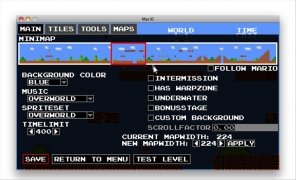
And Mari is not gona be replaced any time soon.PapaPapa Johns Pizza W 21st St N. But they still added support for Windows. Way more niche then Mari, and only a very few freelancer solo artists would use it. Just one more argument: Katana is SUPER niche. They had a tremendous problems bringing 4.0 on macOS. I kinda wonder WHY they didn't stop supporting it earlier. Developers cost a lot of money, and to support a system what brings just a few percents of the revenue. Sometimes they have some obsolete libs for a long time (ogl), sometimes they cut support of something important and instead push their own tech (openCL, metal).

I think the macOS piece of the pie is just a few %. Studios are mostly on linux, with some good presents of Windows. Secondarily, it's just more niche and more studio-oriented product, plus, as mentioned in other comments, it has a very strong competition of low and mid-level assets. First of all it's more demanding from the very beginning, RAM and GPU, and working on Macbook is painful. A lot of courses, a lot of youtube tutorials are being taught on macOS, and I personally know Nuke freelancers (no studio of course) who work primarily on MacBook Pros. The only product with some decent present on Macs is Nuke. I can't say it was always like that, but there been times when mac versions needed some time to catch up. The answer is simple - Foundry don't see value in macOS market. Mari is defensively not going away any time soon, and The Foundry is working on 5.0. I say keep things simple whenever possible. At this point having wide gamut at the texturing stage suddenly doesn't seem that important. That's about a hundred failure points right there. The images created are bitmaps that will drive a shader, which reacts to textured lights, rendered out, passed through comp, graded, then given to the client side finishing team who grade the image even further. But this is texturing we're talking about here. Right now in an ACES pipeline, when a user loads in their jpg they have a whole host of input options: 'Utility - Curve - sRGB', 'Utility - sRGB - Texture', 'Input - Linear - sRGB', 'ACES - ACEScg', 'ACES - ACEScg - sRGB'.all of this just for something found on Google Images.Īll of this added on complexity actually makes it far more likely that mistakes will be made at some point.Īnd yes, the image scientists will say we're not taking advantage of that nice big gamut. I didn't say I didn't care about proper color pipeline, I said I didn't believe an 'advanced colorspace' system was that important in a texturing application. Heck look at Mubdox which for all intent and purposes is dead and yet Autodesk refuses to retire it because it still generates income (though not enough for any dev) But as long as there is enough money for a even a single developer it will not be EOL'd. Not to mention innovate, which is something frankly Mari has never done (not once since their initial release which in the end was all Weta not Foundry).īut Mari will be around for another 5,10 years easily and they certainly have gotten a fire lit under their a*** in the last years which is visible in the quality of their releases. So they will continue to gain and close gaps. Substance of course has a tens or even hundreds of thousands of users more, generating income, which in turn translates into more dev resources.

Substance is not (yet) there to replace Mari fully, though it certainly can handle a lot more than 'bits and bops'. They have been working more or less solely with studio customers and a few extra individual customers for 10+ years.And those studios are slow moving ships.

#Mari for mac ever full#
#Mari for mac ever free#


 0 kommentar(er)
0 kommentar(er)
